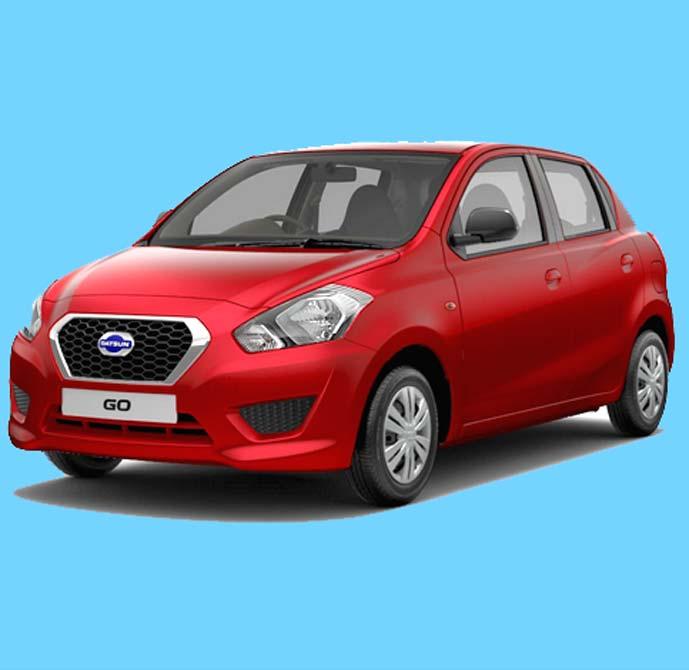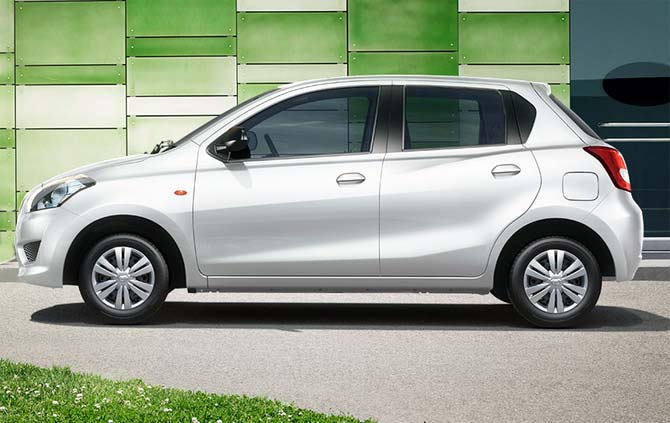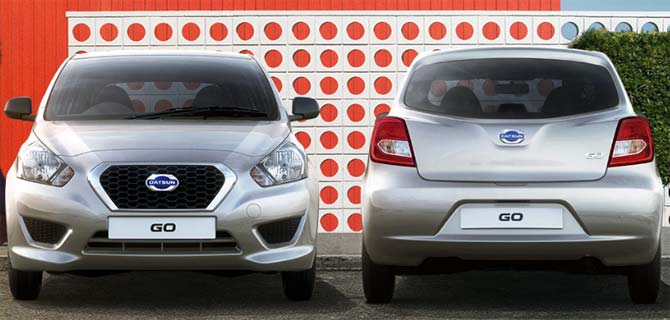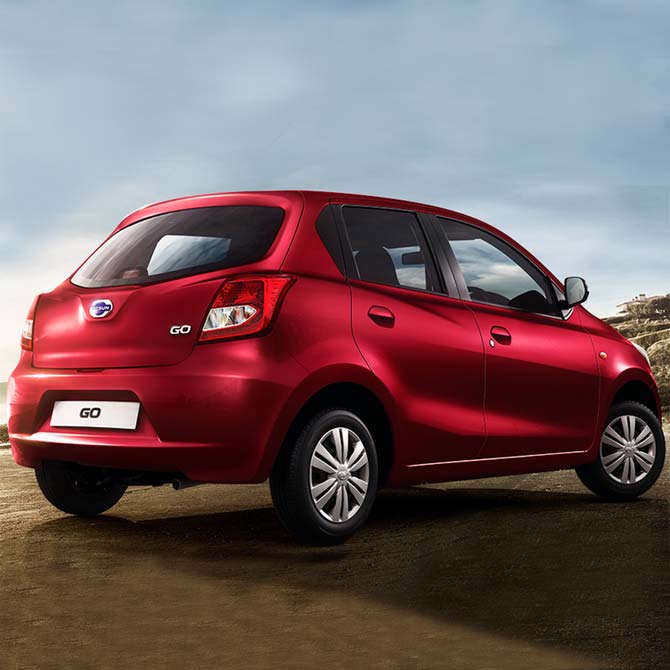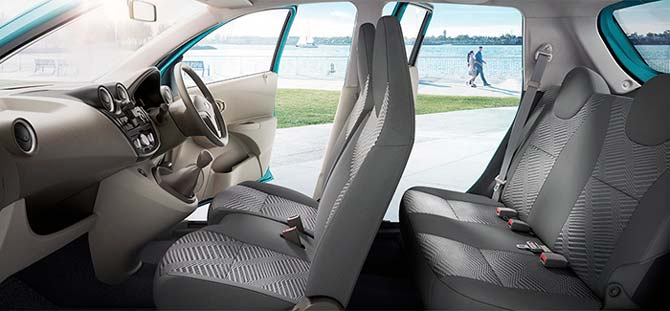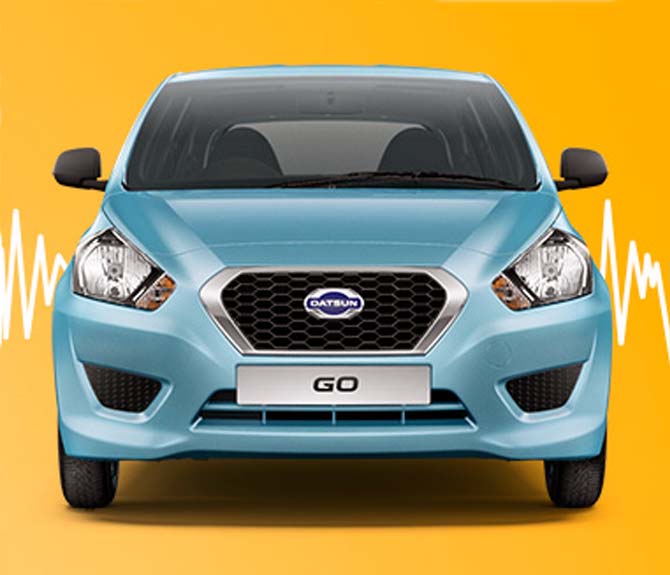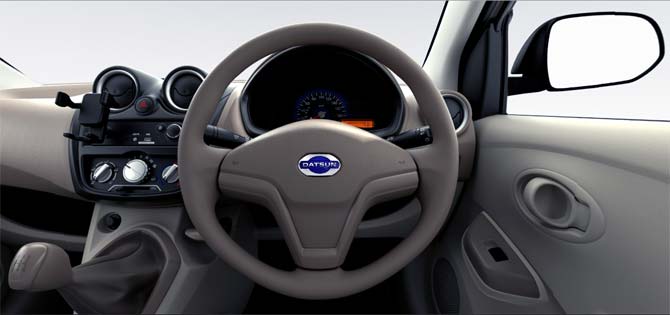 | « Back to article | Print this article |
Datsun GO: An affordable car made for Indian buyers
For Nissan, Datsun is something of a legacy brand and the current launch marks its return to the market after nearly three decades.
"It is idli, not pasta," is how Aswani Gupta, programme director at Japanese car maker Nissan' Datsun brand unit describes the Datsun GO, the company's latest offering, which was rolled out from Renalt-Nissault's Oragadam facility near Chennai recently.
The attempt to make the car seem as local as possible could be because the brand was originally launched in Japan in the 1930s. CEO Carlos Ghosn had announced the launch of the new variant in March 2012.
The company chose India, the world's largest small car market by volume, as a test market to re-launch the brand that last had a variant in the 1970s because of the growing number of young customers here.
Click NEXT to read more…
Datsun GO: An affordable car made for Indian buyers
Positioned as a car for the first-time buyer, with its price tag of Rs 3.1 to 3.7 lakh, Ghosn puts the potential customer base of the Datsun GO at 200-300 million.
"Not all of them will buy the Datsun GO but the people we need to reach out to this emerging middle class in India," says the 59-year-old.
Click NEXT to read more…
Datsun GO: An affordable car made for Indian buyers
The French-Lebanese-Brazilian Ghosn, who manages Paris-based Renault and Nissan, has always been bullish about the Indian market. He was the first to talk of its frugal engineering skills and the potential for an entry-level car in the country.
Now with Europe in distress, the country has become even more prominent in his scheme of things. Ghosn expects 60 per cent of the total car sales globally to come from emerging markets in the future, with a large chunk contributed by India.
Click NEXT to read more…
Datsun GO: An affordable car made for Indian buyers
"Ten years ago, Europe was contributing 30 per cent of the global car sales, now it is only 15 per cent. For Renault, 45 per cent of the sales used to be from Europe," he says. The situation is reversed now, with a little over 50 per cent of Renault sales coming from outside the euro zone.
Ghosn's optimism about India stems from its car-to-people ratio of 15 cars per 1,000 people, one of the lowest in the world.
China has 60 cars for every 1,000 people, Brazil 200, Russia 280, Portugal 450 and the United States, 800. And Ghosn is banking on the Datsun GO to drive sales. "People won't accept cars that are 20 or 25 years old any more, or those that are built on old platforms," he says.
Click NEXT to read more…
Datsun GO: An affordable car made for Indian buyers
For the company, the biggest risk would have been to do nothing, the CEO adds. "The risk is to do nothing because that would mean that in India, 40 per cent of the market escapes us, in Russia, 40 per cent of the market escapes us, and what we think will be 40 per cent of the Indonesian market will escape us."
Nissan will be launching the new Datsun in Indonesia, Russia and South Africa over the next two years.
For the Japanese automaker, Datsun is something of a legacy brand and the current launch marks its return to the market after nearly three decades.
Click NEXT to read more…
Datsun GO: An affordable car made for Indian buyers
Vincent Cobee, the man chosen by Ghosn to give a new lease of life for Datsun, says the brand originated in Japan as DAT-GO (DAT car) exactly a century ago; the first three letters, DAT, are derived from the first letters of the family names of the three key people who supported the business at that time - Den, Aoyama and Takeuchi.
The letters also represented the vision of the company for its products, namely one that would be "durable, attractive and trustworthy".
In its new avatar, the axiom has been recast to stand for "dream, access and trust", he says.
Click NEXT to read more…
Datsun GO: An affordable car made for Indian buyers
Mitsuhiko Yamashita, executive vice-president for R&D, Nissan Motor, says lots of customers, especially in Japan and America, remember the name of Datsun very well.
Historically, the Datsun brand's characteristics included being lightweight with good fuel efficiency, durability and reliability and this is what first-time buyers in new markets would also be looking for, he adds.
Click NEXT to read more…
Datsun GO: An affordable car made for Indian buyers
While it normally takes over two years to go from design to production, the Datsun GO relaunch was completed in a record 16-17 months with around 800 people working on it, according to Gupta.
Yamashita says it is important for the company to develop a vehicle by using its globally diverse resources. Nissan has 20,000 engineers involved in R&D spread over 43 locations across the world.
Click NEXT to read more…
Datsun GO: An affordable car made for Indian buyers
"When we develop a vehicle in India, we take full advantage of the ability of local Indian engineers and we combine these with the experience and know-how that we have accumulated over time. We want to create a strong product and a strong brand by making the best use of the talent locally as well as our existing assets," says Yamashita.
Koichiro Okamoto, chief product specialist in Nissan Motor, says the R&D team sees many potential customers for the Datsun GO, whom the company has termed "the Risers."
Click NEXT to read more…
Datsun GO: An affordable car made for Indian buyers
While these customers share many characteristics, such as the desire to own a car, their lifestyle, family structures, road and parking conditions would be different.
"We value the common characteristics, but at the same time, we would also like to promise the best solution for customer in each country. This is exactly what local product means," he says.
Click NEXT to read more...
Datsun GO: An affordable car made for Indian buyers
The company developed the car, based on three key characteristics an Indian customer would typically look at: value for money, fuel economy and style.
The same also applies to customers in emerging markets, he adds. Datsun GO claims a fuel economy of 20.63kmpl.
With that fuel efficiency and its price tag, it would be taking the competition, mainly from Maruti Suzuki and Hyundai, head on.
